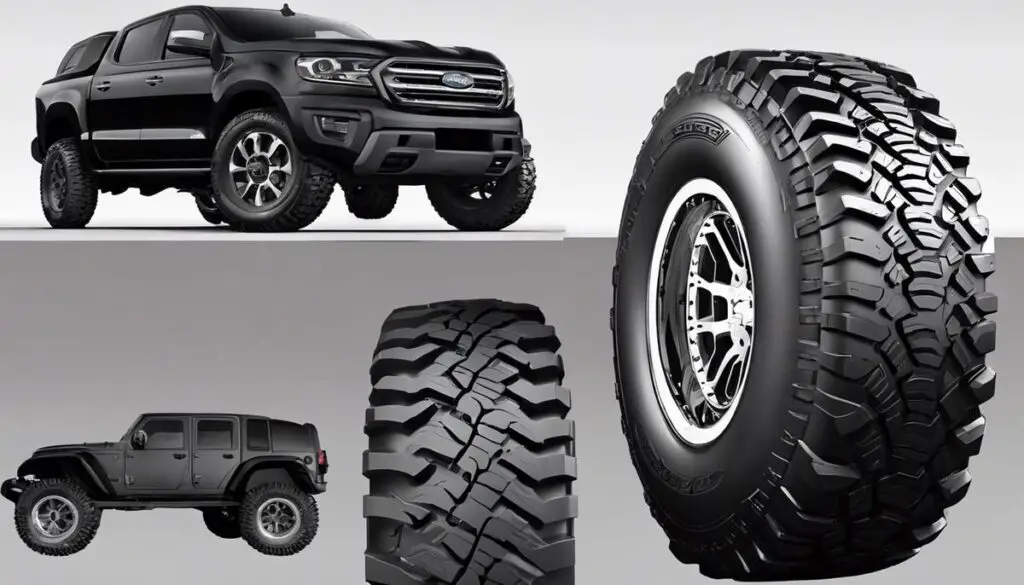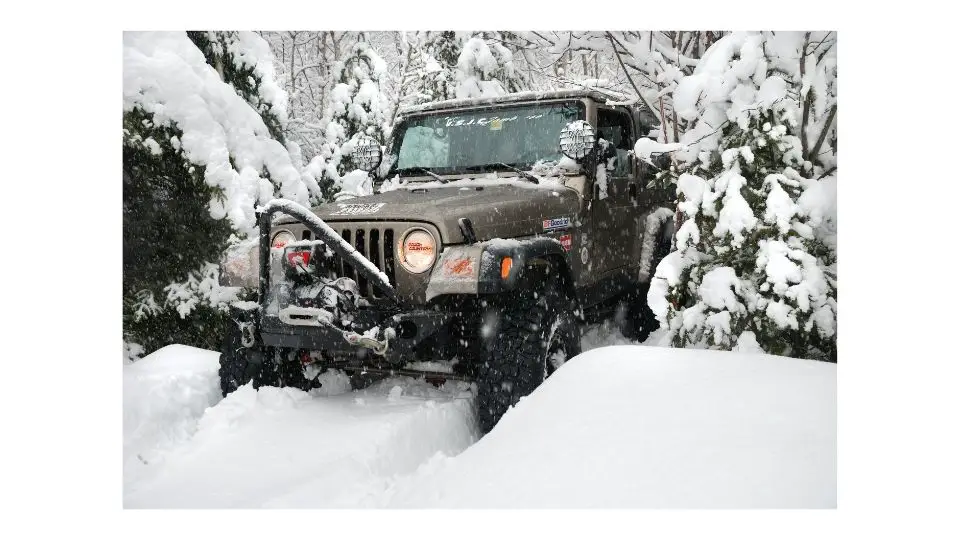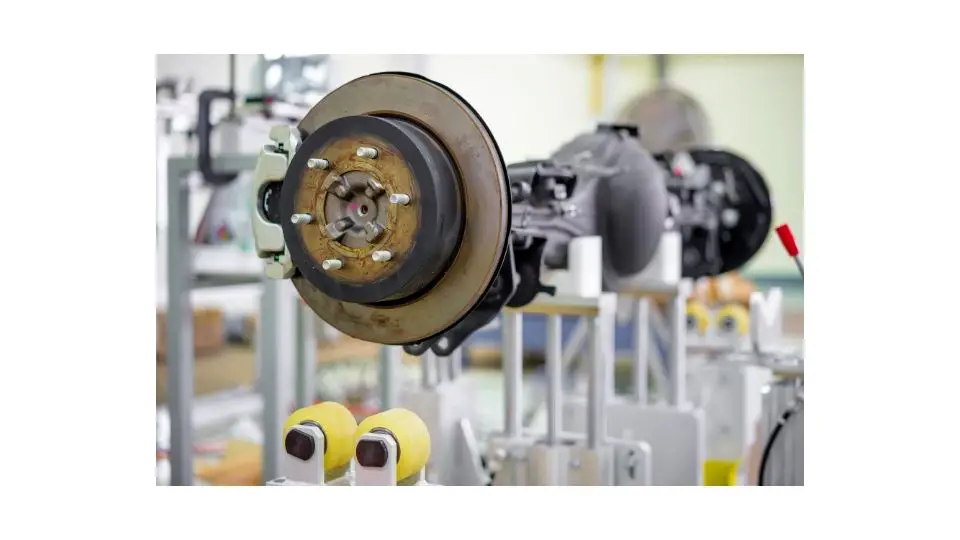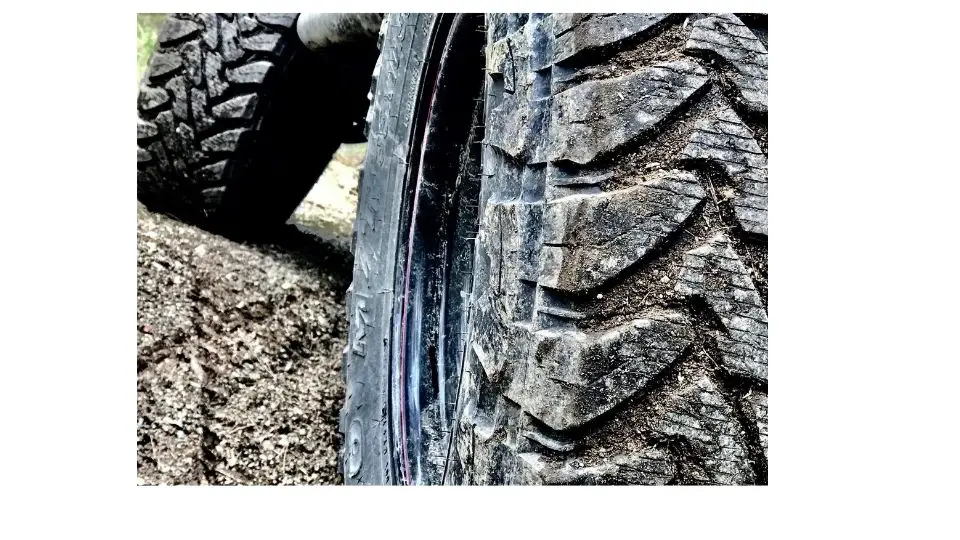Amid the myriad of tire options available to the modern driver, mud tires have gained significant popularity for their rugged utility and distinctive design. They cater largely to off-road enthusiasts and individuals who traverse challenging terrains. However, the prospect of their application extends beyond its typical domain, delving into the realm of winter driving. This journey through terrains, nonetheless, raises crucial questions about their effectiveness and appropriateness. Therefore, this exploration invites a thorough understanding of what mud tires are, how they interact with the properties of snow, their performance amidst winter conditions, and, finally, how they stack against specialised snow tires.
Understanding Mud Tires
Mud Tires: Defying Terrains and Conquering the Unconquerable!
In the grand scheme of off-roading adventures, nothing compares to the pure, unadulterated joy of piloting a vehicle through a sea of ruthless mud, where conventional tires fear to tread. Enter, mud tires: power-packed performers that are uniquely designed to venture fearlessly into the toughest of terrains!
Let’s begin by understanding what distinguishes these specialized tires from their ordinary counterparts. Mud tires, characterized by their vast, chunky treads and large voids, are manufactured specifically for off-road environments. The deep, aggressive tread pattern is much wider and provides extensive spaces between each lug. Why so much gap, one might wonder! Well, these large voids are like determined soldiers on a mission. They tirelessly work to self-clean, effortlessly expelling dirt, mud, and debris, preventing the tire from becoming clogged.
What about their unique design? Conventional tires look sleek and smooth, but mud tires exhibit a wild, rugged aesthetic. Their large lugs often extend to the tire’s sidewalls, a feature known as “side biters.” This correspondent is sure that any off-roading enthusiast would agree that sidewalls meeting muddy terrain without these side biters is like a knight charging into battle without a trusty shield.
Now, let’s talk compounds and construction! Mud tires are crafted from highly durable and resistant rubber compounds. The folks who design these dream up the ultimate fusion of performance and longevity. Think of it as a cacti surviving the harsh desert terrain. Even under punishing conditions, these so-called “off-road cacti” never give up, maintaining grip and durability, and ensuring those adrenaline-pumping escapades remain unhindered.
Lastolnly, mud tires showcase a wider and larger dimensions. They offer the perfect solution for recreational off-roading enthusiasts or individuals whose employment requires them to tackle rough terrains. Larger diameter mud tires provide an elevated ground clearance, preventing the undercarriage from bottoming out.
In conclusion, mud tires make them a quintessential part of any off-roading thrill-seekers arsenal. They’re like trusted warriors, ready to plunge into the epic battles against muddy, slippery terrains, promising a gripping performance every single time.
So, strap on those mud tires and embrace the call of the wild. Remember, it’s not just an adventure; it’s a lifestyle!

Properties of Snow and Their Impact on Tire Traction
Snow and the Science of Tire Grip
As much as we may discuss mud tires and their off-roading prowess, it’s equally important to discuss the enigma that is snow and how it interacts with our tire choices. The characteristics of snow play a key role in tire performance, influencing everything from traction to control. Emphasizing the importance of understanding these characteristics is not an overstatement – it can mean the difference between a fun winter ride and an unfortunate slip up on the slush!
One of the first properties to bear in mind is the density of snow. Generally, fresh snow has a lower density compared to compacted or aged snow. This state of snow can create a spongy or soft layer on the surface, making it difficult for tires to maintain stable contact and grip. However, the wide treads and large voids, typically found on mud tires, can help generate traction on these fluffy surfaces, albeit not as effectively as on mud terrains.
Temperature also plays a significant role in how snow affects tire performance. When temperatures hover around freezing, snow can turn into slush or ice. This creates particular challenges as tires can hydroplane on slush and skid on ice. Regular tires may risk slipping, but specialized tires with features like side biters offer increased traction, helping to mitigate this risk.
Snow depth inevitably changes the game when it comes to driving. Shallow snow may permit the tires to reach the road surface below for optimal traction. Conversely, deeper snow can bury the tires, reducing friction and leading to a decrease in control and stability. Larger dimension tires, which provide elevated ground clearance, shine in these instances by preventing the vehicle from being bogged down.
Let’s not overlook water content. Wet, heavy snow generally offers better traction than dry, fluffy snow. Despite the challenges posed by wet snow, mud tires, due to their resistant rubber compounds, tend to fair better, utilizing their self-cleaning capabilities to reduce the buildup of snow in the treads.
Last but not least, consider the state of the underlying road. Cold road surfaces below the snow can cause tire stiffening, reducing grip significantly. This is where mud tires provide an advantage, as their durable compounds resist stiffening better than regular tires, even in low temperatures.
In conclusion, snow isn’t as simple as it looks! Its key characteristics significantly impact tire performance, challenging our standard notions of traction, control, and tire design. Rest assured, though, with the right knowledge and appropriate tires (like our trusted mud tires), winter terrains can prove to be not only manageable but also an exciting extension to your off-roading adventures!

Mud Tire Performance in the Snow
Mud tires aren’t just for getting down and dirty in the muck. They’re also designed to tackle one of nature’s most challenging environments – snow. So, how exactly do mud tires handle these snowy conditions? Well, it all is rooted in the understanding of how the density of the snow impacts tire performance.
Snow density changes depending on the weather conditions. Loose, fluffy snow tends to be low density and offers less resistance, while compacted or wet snow can be quite dense and difficult to traverse. This is where those beloved mud tires step in. With their self-cleaning treads and wide voids, they can manage high-density snow, creating a path by pushing the heavy snow aside rather than compressing it beneath the tire.
Let’s talk about temperature. As it fluctuates, the state of snow can swiftly shift from fluffy and light to icy and hard. Mud tires favorably respond to these changes by utilizing their durable and resistant rubber compounds to maintain flexibility and traction, even in extremely low temperatures. Furthermore, their unique tire design elements, such as side biters, considerably enhance grip on icy and slippery terrains.
You’ve probably guessed by now that mud tires are not your typical ‘one-size-fits-all’ solution. They’re specialized products designed for extreme conditions. Particularly, their larger dimensions and increased ground clearance make it simpler to maneuver through deep snow layers, making every off-roading adventure in the frosty wilderness a feasible feat.
The water content in the snow is another crucial variable in determining tire performance. Wet snow tends to be slick and can easily turn into slush under pressure, decreasing tire grip and control. Mud tires’ large voids and wide treads, however, aid in rapidly ejecting this slush from the treads, ensuring the tire surface maintains consistent contact with the ground for optimal traction.
Closely related to snow water content is the impact of the underlying road surface on tire grip. A slippery road surface under wet snow can be a recipe for disaster for any vehicle with ill-equipped tires. Mud tires, with their aggressive tread patterns and increased traction features, are better suited to maintain effective grip and control, even on treacherous surfaces layered under slippery snow.
The takeaway here is that understanding the characteristics of snow is fundamental when making tire choices. Appreciating how the nature of snow impacts tire performance is a significant component in selecting the best tires for your off-roading escapades.
In conclusion, mud tires rise to the challenge of snow conditions admirably well. Their unique design features, coupled with a superior understanding of how snow impacts tire performance, make them a formidable choice for every avid off-roader. So the next time you’re planning an exhilarating escapade in the winter wilderness, never underestimate the power of a good set of mud tires! Get those beasts on your ride and conquer the snowy terrains like never before.
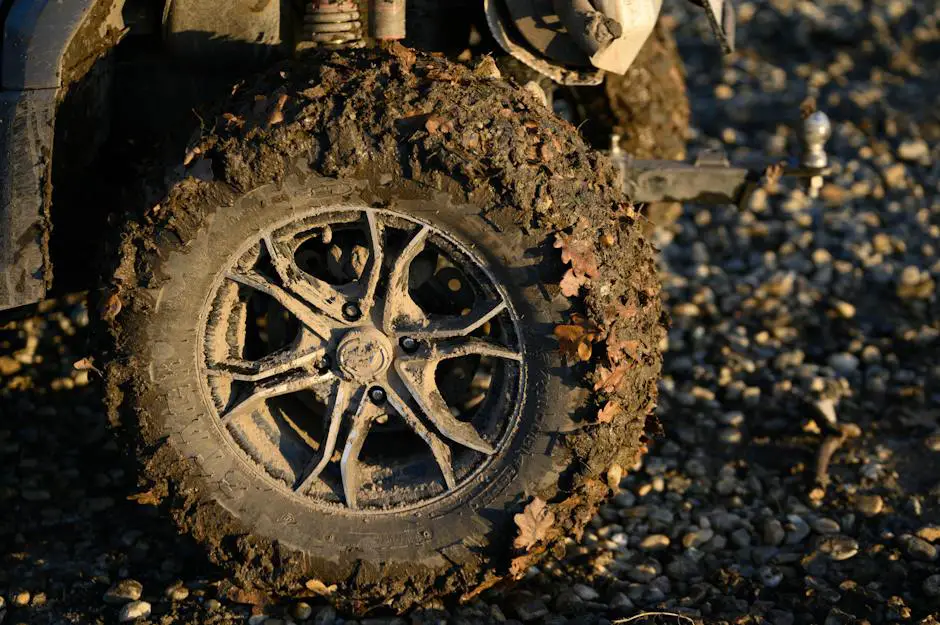
Comparing Mud Tires and Snow Tires
So, you’ve got your heart set on some extreme winter off-roading, but you’re unsure whether mud tires can handle the white stuff. Good news! While snow-specific tires certainly have their advantage in winter conditions, your trusty mud tires can still more than hold their own.
First, it’s crucial to note that mud tires, with their wide tread patterns and large voids, significantly reduce the chance of snow packing into the tread. This is a common issue with non-specialized tires, which can result in a slippery, ice-like effect on the tire surface. Mud tires, on the other hand, have a self-cleaning capability that expels caked-in dirt and… you guessed it, snow!
But, you might ask, what about when the thermometer plummets and the snow turns icy? While sheer ice will always be a challenge for any tire, mud tires feature distinctive side biters. These act like mini-tires on the side of the tire, providing additional bite and thus, increasing traction on unexpectedly icy paths.
However, it’s important not to overlook that when the snow gets a little deep, wider, larger tires will undoubtedly excel. Mud tires typically come in larger dimensions, giving them the unique advantage of greater ground clearance. This extra height could mean the difference between making it over a snowbank or getting stuck.
That said, it’s worth acknowledging that mud tires’ rubber compounds are generally more durable and resistant than those found in snow-specific or regular tires. This means they can withstand harsh, icy conditions and rough terrain, making them a viable choice for winter drives.
As we start to talk about the water content of snow, this is where things get interesting. Wet snow, which is denser and heavier, might pose a challenge to regular tires. Mud tires, however, have been designed to handle such conditions, their tread patterns and side biters working in tandem to provide the necessary grip and traction.
Finally, it’s never prudent to ignore the underlying road surface beneath the snow. While mud tires might not offer the same grip on tarmac as a snow-specific tire, their performance is unrivaled when things get tough. Off-road surfaces often found on popular off-roading trails are where mud tires shine – even in the shivering heart of winter.
So, when it comes to snow, your mud tires might just be more capable than you’d think! It’s undoubtedly worth understanding these differences and similarities, considering your specific requirements and driving conditions. And if winter off-roading calls, may your tires be muddy, your tracks be wild, and your adventures be unforgettable!

Safety and Advice for Using Mud Tires in Snow
Taking a detour through snowy terrains is a different cup of tea altogether. It is not the regular muddy terrain we have traversed and conquered many times with our trusty mud tires. The white, frosted landscape, while breathtaking, brings its own set of challenges that even seasoned off-roaders must pay heed to. And this extends prevalent misconceptions that mud tires could falter in snow.
One might wonder, what could possibly happen? It’s just frozen water, after all. Well, much more than what catches the eye. Snow crudeness or thickness plays a significant role in the interaction between the tire and terrain. The denser the snow blanket, the higher the necessary pull of the tyres, causing the vehicle to work harder and potentially strain the engine.
Now, add fluctuating sub-zero temperatures into the mix. The connection between snow and the tire can be affected by sudden drops or changes in temperature as it can change the snow’s texture, making the terrain either slushy or icy. The unique tread design and rubber compounds of mud tires, however, hold up well against such temperature-driven adversities, churning through the snow without losing traction.
When snow models itself into different forms, it’s really all about the water content. Higher water concentration means an icy, slick surface which may cause the tires to lose grip. Conversely, drier snow can be a recipe for reduced traction. But rest easy, the wider dimensions of mud tires help disperse the water-laden snow, providing a smoother ride through the frosty terrains.
Imagine a scenario presumably out of an action movie scene–crazy, white storm drops a foot of snow on an inadequate street. A regular tire might just give up on you, but not the mighty mud tires. The superior ground clearance of these powerhouses eats up deep snow as easily as it does daunting mud holes, providing the absolute control you need for your winter escapade.
Last but certainly not least, the very substance underneath the snow layer, the road surface, dramatically influences tire performance. Ice-coated streets and frozen dirt roads alter tire grip, yet mud tires with their increased traction, thanks to side biters, ensure a safe and secure ride.
Given the complexity of these snow characteristics, it becomes imperative to meticulously select your tires. Understanding such nuances of snow is key. Opting for mud tires, with their supreme performance, ensures safety and an adrenaline-pumping winter adventure.
Now, while mud tires are not expressively designed for snowy roads, they bear generous results in snowy off-road conditions. Their ability to keep the snow from tightly packing the tread ensures steady driving, even as the mercury drops.
Illustrating these points, the hardcore off-roaders out there can breathe easy. The holiday season nor the snow will stop the adventure-seeking heart. With attention to the right detours, trails, and mindful of the snow’s nature, the mud tires, tried and tested in the grittiest of terrains, would also prove to be competent companions on snowy fronts. After all, an enthusiastic off-roader knows – the thrill of the journey is just as important as the tires that get you there!
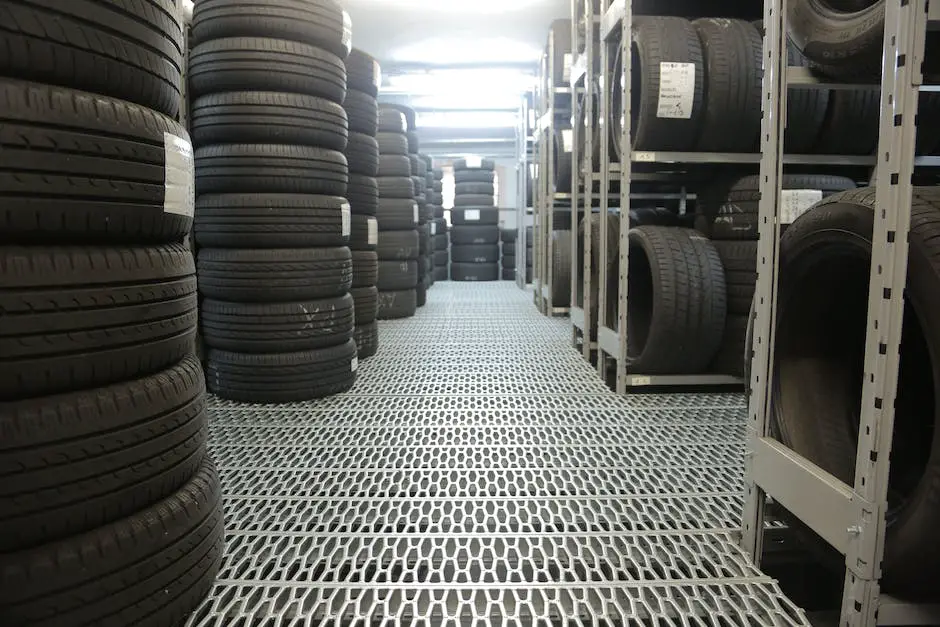
Mud tires, indeed, hold their own in certain snowy conditions, owing to their deep treads and large blocks. These features enable them to grip slippery surfaces and eject snow, helping maintain traction. However, they are not universally applicable or superior to snow tires in all winter situations. Navigating the winter months, therefore, should involve careful consideration of one’s driving requirements, the specific nature of the snowy conditions, and the capabilities of the different types of tires. Finally, we must always prioritize safety above all else, adapting our driving behavior to ensure maximum protection when using mud tires on snowy roads. After all, the prime objective behind understanding the intricacies of tire performance isn’t just about making an informed choice—it’s also about making a safe one.

